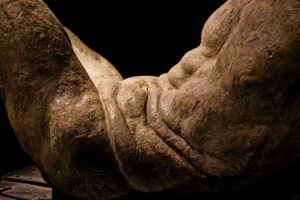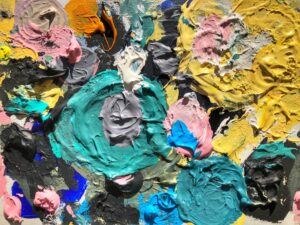In this article, you will explore how analogism affects your perception of art, radically changing the way you interpret and appreciate artistic works. Through the comparison and association of elements, you will learn to recognise deep connections that can enrich your visual experience. Get ready to discover how this philosophy can open new doors to your understanding of art and stimulate your personal creativity.
Definition of analogism
Analogism is an artistic approach that is based on the use of analogies to create meanings and connections between seemingly different elements. In this context, works of art become vehicles for interpretation, inviting the viewer to reflect on complex relationships. This concept stimulates an active and involved perception, enriching the visual experience and creating a network of meanings that go beyond the simple act of observation.
Key concepts
Key concepts of analogism include metaphor, assonance and the relationship between form and content. These elements enable a dialogue between different works, fostering a deeper, multi-faceted understanding. Analogy invites you to look for links and similarities, expanding your artistic perception. Analogies can also reveal hidden emotions and feelings, transforming your visual experience.
Historical context
The historical context of analogism is characterised by the evolution of art and critical thinking. Born as a response to earlier artistic currents, analogism developed in the 20th century, influenced by movements such as surrealism and abstractionism. During this period, artists and theorists began to explore the connection between art and perception, leading to a new aesthetic understanding of the world around us. Your journey through the history of analogism reveals the roots of an approach that continues to influence modern artistic practices.
The historical context of analogism is set in a phase of intense experimentation in the 20th century art scene. During this period, movements such as Surrealism challenged traditional conventions, inviting artists to express the subconscious and explore deeper meanings. Analogism stands out for its ability to connect disparate elements, reflecting a society in search of new forms of expression. With the advent of the avant-garde and theoretical debates, analogism emerged as a bridge between art and perception, proposing interpretations that invite constant and nuanced confrontation. Your understanding of this historical context will enrich your experience of analogue works and their contemporary relevance.
The Impact of Analogism on Artistic Perception
Analogism plays a crucial role in the transformation of your artistic perception. This current invites you to connect ideas and concepts through analogies, stimulating a deeper visual experience. When you approach a work of art, you begin to see not only the object represented, but also the emotions, experiences and subtle contexts it evokes, thus broadening your interpretive horizons.
Art specimens
Artists such as Salvador Dali and René Magritte are emblematic examples of how analogism can be used to challenge conventions and broaden your vision. Their works are not mere representations, but invite you to explore hidden meanings and connections between reality and dreams, helping you to recognise the importance of visual metaphors.
Experiences of perception
Analogism stimulates novel experiences of perception, leading you to see the world through a new and more integrated lens. When contemplating a work of art, analogue analysis allows you to perceive not only the visual form, but also the underlying cultural influences and emotions, transforming your interaction with art.
Through analogism, your experiences of perception are enriched with meaning and complexity. By immersing yourself in metaphors or symbols, you not only grasp the aesthetics, but also understand the deeper stories and meanings behind the work. This process helps you form personal and cultural connections, making art an extraordinary medium for exploring your own interiority and that of others. In this way, analogism not only broadens your artistic perception, but also your understanding of the world around you.
Analogism and visual culture
In the context of visual culture, analogism offers a new way of interpreting images and the meanings they convey. Your artistic perception is enriched through the connection between different elements, creating a dialogue between shapes and colours that goes beyond traditional representations. This interaction stimulates deeper reflection on the content and emotions that art can arouse, thus broadening your aesthetic horizons.
Contemporary representations
Contemporary representations are strongly influenced by analogism, as artists often draw on a wide range of cultural references. Your visual experiences are amplified by the mixture of styles and techniques that reflect the complexity of today’s world. Through this lens, art becomes a living language that connects personal and collective experiences.
Media influence
The media play a crucial role in the analysis and interpretation of contemporary artworks through analogism. Your daily interactions with images and digital content lead you to eat an increasingly varied and complex visual language. This mediation influences your expectations and narratives about art, stimulating an immediate and engaging reaction.
Through social media, blogs and sharing platforms, visual representations are democratised and amplified, allowing a wider audience to interact with art. This process offers the opportunity to compare one’s own ideas with those of others, creating a global dialogue. Artists, for their part, are influenced by emerging trends on various communication channels, which leads to a constant integration of analogue and contemporary visual culture. In this way, your artistic experience becomes part of a broader and more accessible discourse.
Criticism and limits of analogism
Although analogism has advantages in facilitating artistic understanding, it has criticisms and limitations that are important to consider. Some argue that the approach can oversimplify works of art, reducing them to mere analogies, thus excluding other interpretive riches. Moreover, over-reliance on analogies might prevent a deeper appreciation of the historical and cultural specificities of a work.
Theoretical Challenges
When approaching analogism, one encounters several theoretical challenges. One of these is the difficulty of establishing objective parameters to compare different works of art. Interpretations can vary widely depending on the author, context and individual perception, making it difficult to achieve a common basis of understanding.
Practical objections
Practical objections to analogism may arise from its implementation in the everyday art context. For example, many artists and critics feel limited by the rigid structure of analogies, finding that they fail to capture the complexity and nuance of contemporary art, which often defies conventional categorisation.
Moreover, practical objections are not only limited to artists, but also extend to educators and students in the field of art. The use of analogism may lead to superficial interpretations and a lack of appreciation for the originality and diversity of works. Consequently, it is crucial to strike a balance between the use of analogies and a deeper analysis that considers the contexts and intentions of the artist.
Analogism in Art Practice
Analogism in art practice creates a bridge between concept and visual expression, allowing you to explore new dimensions of art. This approach encourages artists to use metaphors and symbolism to create meaningful works of art. You can see how analogism not only enriches the creative process, but also stimulates an emotional response in the viewer, making art a powerful and resonant medium.
Techniques and approaches
In your artistic journey, you can integrate various techniques and approaches inspired by analogism. For example, the use of symbols, colours and shapes that evoke emotions and past experiences is crucial. Through experimentation with different materials and styles, you can combine abstract and concrete elements, resulting in works that speak not only to the eye, but also to the soul.
Case studies
By examining some case studies, you can see how analogism translates into concrete artistic practices. These examples can inspire and guide you on your way. Here is a list of some artists and works that embody this philosophy:
- 1. Gustav Klimt: ‘The Kiss’ – Use of golden ornaments to evoke sensuality and intimacy.
- 2. Salvador Dalí: ‘The Persistence of Memory’ – Symbolism of time through loose clocks, reflecting relativity.
- 3. Frida Kahlo: ‘The Two Fridas’ – An analysis of identity dualism through self-representation.
These case studies not only show the impact of analogism on art, but also offer practical insights into how to apply these ideas in your own work. Consider how each artist used symbolic elements to connect with the audience and convey complex emotions.
Future of analogism in artistic perception
The future of analogism in artistic perception is fascinating and full of potential. As technology advances and artistic practices evolve, you can expect to see an increasing integration of analogue and digital. This fusion offers new opportunities to explore emotions and meanings through more immersive and interactive art forms.
Emerging trends
Emerging trends in analogue art show a renewed interest in craftsmanship and dexterity. You may notice that many artists are reintegrating traditional techniques into their work, merging them with modern digital practices. This approach not only enriches visual experiences, but also celebrates the beauty of imperfection and authenticity.
Possible developments
Possible developments of analogism in artistic perception could include collaborations between artists and technologists, creating artworks that challenge conventions. You might also see installations that combine analogue and digital elements, stimulating your senses and taking artistic storytelling in new directions.
By engaging with these new art forms and actively participating in immersive experiences, you might discover how analogism can influence not only the way you perceive art, but also your interaction with it. Future exhibitions could explore themes such as sustainability and nostalgia, inviting you to reflect on how analogue art can connect the past with the future. A medida que explorer, be open to how these developments may reveal new dimensions of creativity and artistic expression to you.
How does analogism transform artistic perception?
In conclusion, understanding how analogism transforms your artistic perception is crucial to fully appreciating works of art. Through this approach, you can discover new connections between visual elements and emotions, expanding your capacity for interpretation. Analogism not only enriches your aesthetic experience, but also stimulates deeper reflection on the meaning of art in your life. By adopting this perspective, you can see the artistic world in a completely new light, facilitating a meaningful dialogue with the works you encounter.



